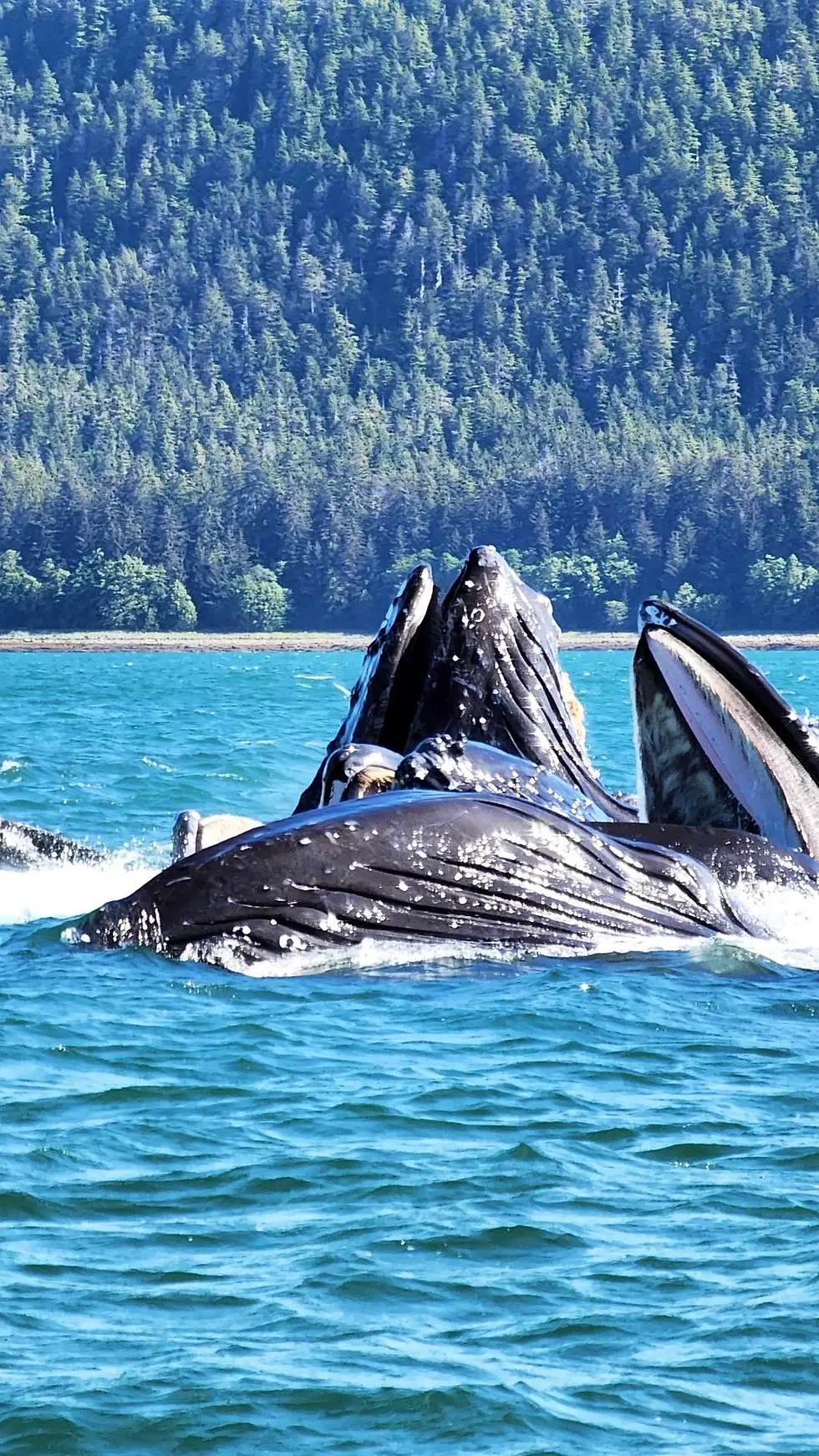Best Whale Watching in Alaska
- Monique Kiefner

- Sep 8
- 4 min read
Whale watching in Alaska is an unforgettable experience that will transport you to another world. I’m a guide in Alaska and a former year round resident and I can tell you that seeing whales in the wild waters of Southeast Alaska is something you don’t want to miss! Once you’ve heard a whale breathe, you’ll want to keep hearing it over and over as long as possible.
Even if you are on a cruise and think you don’t need to go on a boat tour from a cruise, I want to encourage you to do it anyway because it’s a very different experience (although seeing whales from your cruise ship balcony is also amazing!).
What to Expect on a Whale Watching Tour in Alaska
Most whale watching tours are about three hours, however some in Seward, Valdez and Homer may be all day and combined with other highlights (like tidewater glaciers).
In Alaska, whale watching boats have both indoor and outdoor spaces, big windows and great visibility no matter where you’re sitting. All whale watching boats I’ve been on in Alaska have restrooms.
Expect any weather – hot sun, heavy rain, wind – know that the weather does not impact your ability to see whales so bring a rain jacket and enjoy!
Some whale watching boats have snacks and drinks available and some do not, so make sure to ask about this is if it’s important to you.
If you’re worried about seasickness, this is unlikely to be an issue in a whale watching tour from Juneau. The waters around Juneau are very protected from big waves. Seward and Homer are much more exposed. When in doubt, follow a preventative path (talk to your doctor about your options here).
What kind of whales will I see in Alaska?
There are many kinds of whales in Alaska, but this article will focus on the two types of whales you are most likely to see whale watching in Alaska, Humpback whales and Orcas (Killer whales).
On most whale watching tours you will see other wildlife as well such as eagles, seals, sea otters and puffins, depending on where you are.
What is the best time of year to go Whale Watching in Alaska?
Humpback whales, the most common whale to see whale watching in Alaska, are in Alaska waters from May through September. They migrate in winter to Mexico and Hawaii but spend summer in Alaska bulking up on food.
Orcas are in Alaska’s waters all year, and some tour companies in Seward start operating to see Orcas as well as migrating Gray whales in late March. Most tours in Alaska are May through September. Any of those months are excellent for whale watching.
What are the best locations for Whale Watching in Alaska?
Whale watching in Alaska is incredible because there are lots of whales, and humpback whales in particular are super active as they are basically feeding all summer!
Juneau is the best place in Alaska for whale watching – there are just so many whales feeding in the perfect Alaska buffet of the waters surrounding Juneau. Icy Strait Point/Hoonah just outside the entrance to Glacier Bay National Park is another fantastic location.
Seward comes in at a very close number 3 for me. A few other places I recommend are Valdez, Homer and Sitka. You really can’t go wrong with any whale watching tour in Alaska, my rankings are based on how many whales you are likely to see as well as the ease of getting to that location.

Are whale watching tours in Alaska accessible for people with disabilities?
Most tour companies are able to accommodate people with a wide range of disabilities. However, it is important to ask the tour operator about this specifically if you are a wheelchair user unless the tour is advertised as being wheelchair accessible (this is common when booking through a cruise line).
The biggest challenge is usually the ledges in doorways on board ships as well as bathrooms. Typically there are only stairs that go to the top level of the boat if it has one, but that does not present a problem for whale watching as whale watching boats in Alaska have indoor and outdoor space with great viewing on the bottom level.
Tips for whale photography
The most important tip I have for you for whale photography is to not spend the entire time behind your phone or camera lens! Some of the things that make whale watching so incredible like observing their behavior and hearing them breathe (magical) are best experienced without the camera.
Whale photography is hard. You’re typically looking from a distance and whales move fast! Expect to get lots of photos that look like a splash
If you want to get good close ups of the tail, you’ll want to have a real camera with a long lens for zooming in. With your phone, try using burst mode to get as many photos to choose from as possible. Another good strategy is to take a video and pull still photos off it later.
Finally, don’t be shy about sharing photos with the other people on your tour – most people are happy to share!
.png)


